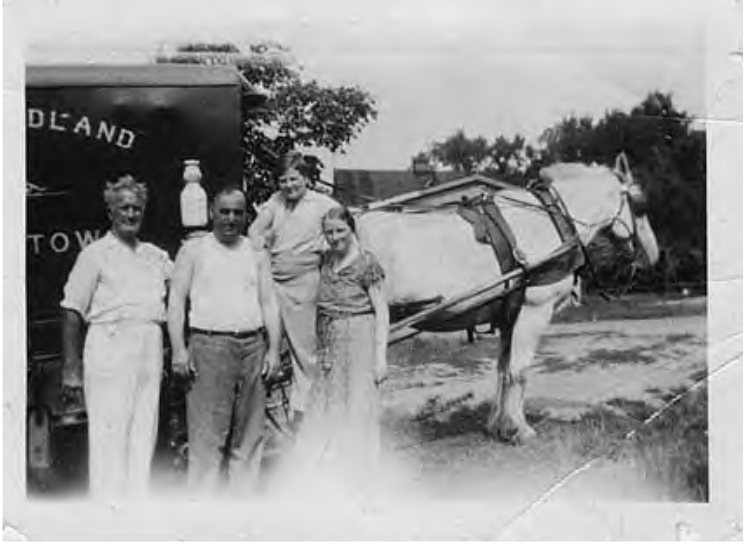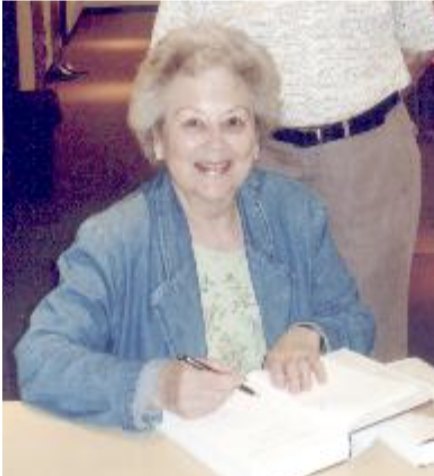
The following story was written by Sigrid Reddy Watson Terman for the April 2010 Historical Society newsletter, “The Town Crier.” Sigrid is a former Board member and former President of the Historical Society, as well at a former Director of the Watertown Free Public Library. For several years starting in 1997, she wrote a Watertown history column for the Watertown TAB/Press called “Echoes.”
WATERTOWN’S DAIRIES SUPPLIED SURROUNDING TOWNS
I’m sure many of you Watertown history fans remember the “Echoes” column that Sigrid Reddy Watson wrote for several years for the Watertown TAB/Press beginning in 1997. Ms. Watson was the Director of the Watertown Free Public Library from 1971-1989 and President of the Historical Society of Watertown from 2001-2003.
Ms. Watson’s weekly column was about Watertown history. She covered subjects including
Watertown during the Revolution, the Arsenal, women’s suffrage, the Fowles, renowned local
people and buildings and houses, our many ethnic groups, the industries that made Watertown a
place to settle in during the 19th and early 20th centuries, and many other subjects.
Fifty years ago, several dairies supplied the people of Watertown and surrounding towns – even Boston – with milk and other dairy products which were delivered to the customer’s door. Glass milk bottles may now be “collectibles,” but years ago they were common. Even into the fifties and sixties you might expect the milkman to make his daily rounds, and you left a note in a bottle on your back steps to ask him to leave an extra quart or a pint of cream or even some cottage cheese.
Now we go to the store for milk and bread, and have forgotten that in our parents’ time these products were delivered to people’s homes. Before the delivery vans were motorized, the familiar “clop” of the milkman’s horse signaled the advent of the daily delivery.
For many years Watertown was the home of two dairies: the Andrews Milk Company and the Woodland Dairy. The Woodland Dairy was located on Waverley Avenue where Woodland Towers now stands, and the Andrews Milk Co. was at 43 Franklin Street near Arsenal Street. Allen Andrews, who taught woodworking at the High School for many years, tells us that Chauncey Andrews founded the company, and that Allen’s great-uncle, Austin Andrews, came from Machias, Maine, to join his brother, who later made Austin the president of the company. The milk wagons of the Woodland Dairy, with their horses and drivers, are pictured in “Crossroads on the Charles,” and now we have, courtesy of Allen Andrews, a photograph of the delivery wagons of the Andrews Milk Company.
According to Allen, the two Watertown milk companies engaged in a friendly rivalry, and cooperated with each other and with H.P. Hood, dividing up the western suburbs and even the neighboring parts of Boston so that they could serve customers in an ever-widening area. Allen says that in order to ensure the high butterfat content of the milk, his father used to drive up to see his suppliers in Vermont, taking the whole family along with him for the ride. He carried with him a centrifuge, and would personally milk each cow and centrifuge the milk from it. Then if he found that the milk given by a particular cow was not up to standard, he would point it out to the farmer and tell him that she should be “retired.” In those days, a high content of butterfat was preferred, an interesting contrast to the present day’s four-percent standard for “whole” milk
One of the Andrews brothers eventually went into the ice cream business. Because of the high butterfat content, ice cream would melt quickly and if you had it in an ice cream cone, you had to keep licking as it melted and ran down the outside of the cone – messy, but delicious. Now, because people worry about fat content, ice cream manufacturers put fillers into the mixture to achieve the necessary bulk.
When I visited Allen and his wife Dorothy in their retirement home in Northwood, New Hampshire, he gave me, for the Library, a poster with a number of pictures of the operations of the Andrews Milk Company, and reminded me that it was he who brought his woodworking class to build the partition in the stack wing of the Library so that we could have a room for the Elderly Drop-in Center. I had asked Ed Francis, Allen’s department head at the High School, if he could help us out, and he sent Allen and his students to enclose the space where for several years senior citizens met for classes in painting, knitting, or crocheting, or to chat over cups of coffee. This was the predecessor of the beautiful Senior Center that has now been provided by the Town next to the Phillips School building and across Marshall Street from the Fowle House.

For many years Dorothy, Allen’s wife, taught first grade in Watertown, and she remembers with pleasure the excitement with which her students learned to read. They also performed in plays, notably “Peter Pan.” We shared recollections of the differing approaches to teaching reading and agreed that our experience as grandparents has convinced us that phonics will always be an important part of the learning process.
Allen has a collection of the milk bottles that were used by the Andrews Company. The bottles had the company’s name printed in red on them, and they were manufactured in quart, pint,
half-pint and gill sizes. Allen explained that the gill was used to provide individual servings to children in schools. His most precious bottle is one that a friend found in a hole being dug during the building of the new high school; it still has the name of the Andrews Milk Company on it. If you find, while digging in your garden or cleaning out your basement, a bottle bearing the name of one of Watertown’s old dairies, please don’t throw it away; give it to the Historical Society so that we’ll keep the memory of the time when we didn’t have to go to the store for milk but had it delivered right to the door. And, like Allen, give old photographs of ordinary events and activities and people to the Watertown Public Library; they serve as documents of the town’s history. (Note – The Historical Society of Watertown welcomes your old photographs, too.)
Sigrid published her columns in a book called “Watertown Echoes: A Look Back at Life in a Massachusetts Town.” The book is available for purchase through the Historical Society of Watertown for $10.00. To purchase it, please contact Joyce at joycekel@aol.com.
Thank you, Joyce.I remember the boxy white milk truck delivering milk to our home up to the early 1950s. Block of ice and hay bales kept the milk and cream in cases of those glass bottles cold in the summer. Lattices of wood on the floor kept the crates from moving around during deliveries. The smell of partially curdled milk soaked in fresh hay gave the truck a sweet smell that reminded me of the dairy farms my grandfather took me to on weekend jaunts. The milkman in big overalls was a friendly fellow who sometimes treated me to a gill sized (thank you, Joyce, for that info) bottle “on the house”!
See the white milk-bottle silhouette painted on the truck in the photo? I remember seeing whole milk delivered in glass bottles shaped like that. The bulb-shaped part held cream that had separated from the milk in the bottle.
There was a spoon-shaped device you could insert into the top of the bottle , to temporarily block the bottom of the bulb to keep the milk in the bottle while you poured off the cream.
I have one of those spoons.
Ware Dairy was our milk provider at 92 Hovey St. Where were they located? Yes, and I even remember horse and wagons on our street. I’m now 82 but it’s been a great journey.
My name is Kenneth Andrews and I am the son of Austin F Andrews and Grandson of Austin H Andrews. Austin H Andrews sold the business to his son Austin F Andrews. I have the complete story about Andrews Dairy. It was started in Waltham on Dale Street Court, moved to Arsenal Street Watertown, then to Franklin Street, Watertown. I have milk bottles, photos, advertisements and etc. of the Andrews Dairy!
Have a bottle imprinted Charles Woodland ,WatertownAny interest in Watertown Historic Society keeping this for collection